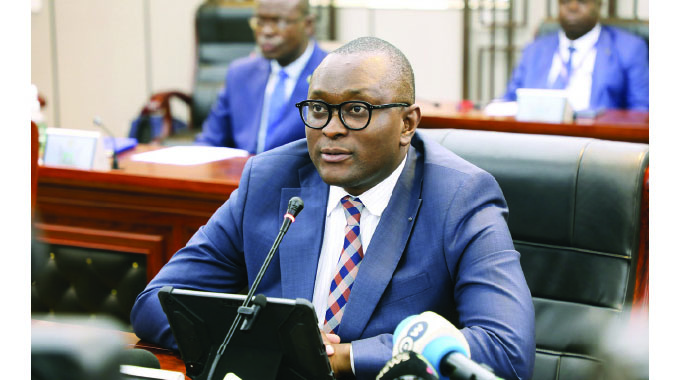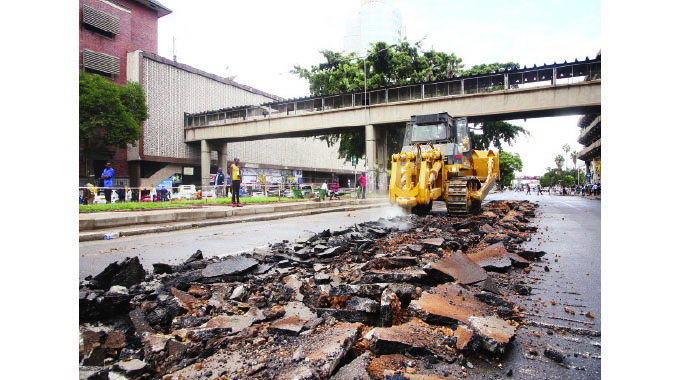Govt scraps Cala, introduces school based projects

Blessings Chidakwa-Herald Reporter
THE Continuous Assessment Learning Activities (CALA) have, with immediate effect, been replaced with the new school-based projects of practical applications with the number of areas covered by the non-examination process reduced from about eight to one for each subject.
Learners in primary schools will now be offered a maximum of six learning areas instead of a minimum of 27, which they used to do, while Form 1 to 4 learners will have five compulsory learning areas.
In line with the Second Republic policy of leaving no one and no place behind, the Government is also ensuring the provision of conducive teaching and learning infrastructure in rural areas, small-scale and commercial farming areas as well as old and new resettlement areas.
Speaking after yesterday’s Cabinet meeting in Harare, Information, Publicity and Broadcasting Services Minister, Dr Jenfan Muswere, said Cabinet received and approved the Heritage-Based Education 2024-2030.
Dr Muswere said it was presented by the Minister of Higher and Tertiary Education, Innovation, Science and Technology Development, Professor Amon Murwira, as the chairperson of the Cabinet Committee on Human Capital Development, Skills Development and Application.
Heritage-based education would be anchored on the pillars on programmes or learning areas infrastructure, staffing infrastructure, physical and digital infrastructure, legal and regulatory infrastructure and financial infrastructure.
“Pertinent issues in the learning programmes infrastructure include rationalisation of learning areas and strengthening the school-based continuous assessment.
“At infant level (ECD A to Grade 2), learning areas are being reduced from the previous 11 to six.
“The reduction will also apply at junior level in Grades 3 to 7. At secondary school level, the core and compulsory learning areas are being reduced from seven to five. An inclusive and integrated approach will be used to cater for learners with special needs, including thorough provision of assistive devices,” Dr Muswere said.
The review of the assessment modalities and tools would entail the rationalisation of CALA activities, now denoted as school-based projects, which emphasise on the learner being observed carrying out the practical aspects at school.
It had been envisaged that the identification of pathways would be implemented early when enrolling learners for secondary education in order to cater for differences in talent and ability.
“Learners at secondary school level will study at least three electives from the following categories: the sciences, languages, humanities, commercials, technical and vocational, and physical education and arts.
“The future of the country will increasingly be shaped by science and technology, hence the bias in the education system to foster critical thinking, innovation, creativity, problem-solving and programming,” said Dr Muswere.
As the learners enrolled for secondary school level, he said, they would be then categorised according to their areas of proficiency.
Central to the delivery of quality learning was the capacitation of teachers since the heritage-based curriculum required a different approach.
“Focus will be placed on in-service teacher training and coaching, using locally available resources.
“The inquiry-based teaching approaches and the methods pillar aims to transform teaching practices from the traditional rote learning, lecture and drill to more learner-centred approaches where pupils have space to develop their creativity, to develop and express their ideas, to collaborate with one another, to learn by doing and thereby experience holistic development,” said Dr Muswere.
As part of employment creation, Dr Muswere said personnel qualified in technical and vocational programmes would be considered for employment as teachers in relevant learning areas.
“This is expected to increase the absorption of post O-Level students in tertiary education institutions in the country and form the foundation of start-ups for the enterprising learners. Suitable and appropriate physical and digital infrastructure will be provided,” he said.
Dr Muswere said the Government was prioritising the provision of adequate and appropriate infrastructure including classrooms, workshops,
laboratories, internet connectivity, technical equipment and teachers’ houses in order to achieve the intended goals.
“The workshops and laboratories shall be tailor-made according to the unique geographical needs and locally available resources which learners can observe, manipulate and explore during their learning processes. Access to electricity, either from the national grid or renewable sources of energy, will be a priority for every school. This is in order to bridge the gap between the rural and urban schools. The focus will be more on learning by doing,” he said.
Dr Muswere said in order to actualise the aims of the education system, a review of the legal and regulations infrastructure would be undertaken.
That included the alignment of the Heritage-Based Education Curriculum with Section 13 of the Constitution of Zimbabwe which states: “The State and all institutions and agencies of Government at every level must endeavour to facilitate rapid and equitable development”.
“Policies and regulations will be implemented to ensure that no place or individual is left behind as the curriculum is implemented. There will also be continuous harmonisation of the primary and secondary education curriculum with the higher education curriculum,” Dr Muswere said.
Responding to questions from the media, Primary and Secondary Education Minister Torerayi Moyo said the revised curriculum was intended to rationalise CALA.
Minister Moyo said CALA was introduced at a time when there was an outbreak of Covid-19 around 2020 and in the majority of cases, the teachers had not been trained to effectively manage CALA.
“Our observations were that learners were doing more than 27 CALAs at Grade 6 and Grade 7 and that had to be reviewed. The revised curriculum is very important in the sense that we want to inculcate critical thinking skills in our students to embrace problem solving issues,” he said.
Minister Moyo said learners needed to be able to innovate, identify societal problems burdening society, then carry out their research for their projects based on the problems faced by the community.
“Our emphasis is to ensure that we vocationalise education so that by the time a learner finishes Ordinary Level, he or she must be able to provide goods and services that are needed.
“One should be able to have skills of making vehicles, writing housing plans. That is the main motive of this revised curriculum,” he said.
Minister Moyo said it was the Government’s aim to ensure that before rolling out the curriculum, it became compulsory for every teacher to go through training as a form of human capital development.
For easy connectivity, Minister Moyo said the Government would introduce “internet in the box”.
“That means we are going to have a server in schools, especially in rural areas. It means a server will be deployed in the administration block so that any learner within a radius of 100 to 200 metres can access the learning material uploaded by the teacher.
“There is not going to be any data costs because of the use of this server,” he said.









Comments